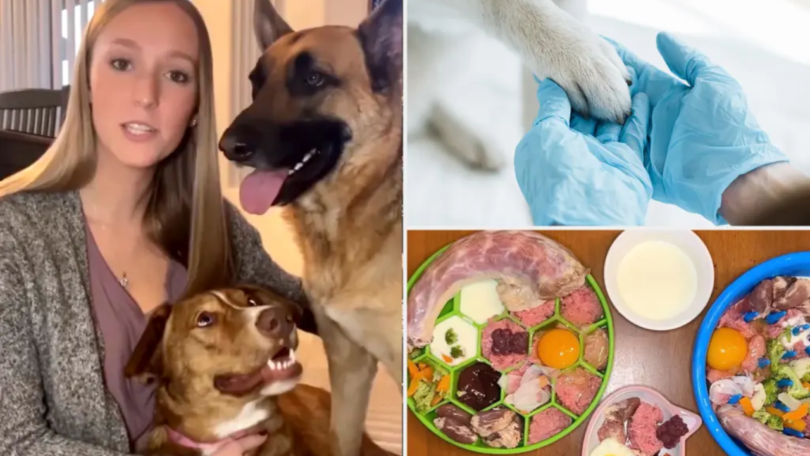Changing your dog's diet can be a daunting task for both pet owners and their furry friends. Whether you're switching to a new brand, transitioning to a different type of food, or addressing specific health concerns, the process can be stressful if not done correctly. This comprehensive guide will provide you with five expert tips to make the transition smooth and stress-free for both you and your canine companion.
Understanding the Importance of a Proper Transition
Before diving into the expert tips, it's crucial to understand why a proper transition is essential when switching your dog's food. Abrupt changes in diet can lead to various issues, including:
- Digestive upset
- Refusal to eat
- Nutritional imbalances
- Stress and anxiety
By following a gradual and well-planned transition process, you can minimize these risks and ensure your dog's health and happiness throughout the change.
Tip 1: Gradual Transition is Key
The most important aspect of switching your dog's food is to do it gradually. This allows your dog's digestive system to adapt to the new food without causing upset.
The 7-10 Day Rule
Experts recommend transitioning over a period of 7-10 days. Here's a sample schedule:
- Days 1-3: 75% old food, 25% new food
- Days 4-6: 50% old food, 50% new food
- Days 7-9: 25% old food, 75% new food
- Day 10 and beyond: 100% new food
Benefits of Gradual Transition
- Reduced Digestive Issues: Slowly introducing the new food allows your dog's gut bacteria to adjust, minimizing the risk of diarrhea, vomiting, or constipation.
- Increased Acceptance: Dogs can be creatures of habit. A gradual change helps them become accustomed to the new taste and texture.
- Easier Monitoring: A slow transition allows you to closely monitor your dog's reaction to the new food and make adjustments if necessary.
Expert Insight
Dr. Sarah Thompson, a veterinary nutritionist, emphasizes, “Patience is key when transitioning your dog's food. Rushing the process can lead to digestive upset and may cause your dog to reject the new food entirely. Stick to the gradual transition schedule, even if your dog seems eager for the new food.”
Tip 2: Choose the Right Time for the Transition
Timing is crucial when it comes to switching your dog's food. Choosing the right moment can significantly impact the success of the transition.
Avoid Stressful Periods
Avoid changing your dog's food during times of stress or significant life changes, such as:
- Moving to a new home
- Introducing a new pet or family member
- During illness or recovery from surgery
- While traveling or boarding
Pick a Calm, Routine Period
The ideal time to switch your dog's food is during a period of normalcy and routine. This allows your dog to focus on the dietary change without additional stressors.
Consider Seasonal Factors
Some dogs may have different nutritional needs or appetites depending on the season. For example:
- Summer: Dogs may have decreased appetites due to heat. Choose a time when temperatures are mild.
- Winter: Some dogs may require more calories in colder months. Consider this when selecting the new food and transition timing.
Expert Insight
Canine behaviorist Emma Roberts advises, “Dogs thrive on routine. Introducing a new food during a stable, stress-free period in your dog's life will increase the likelihood of a successful transition. Pay attention to your dog's overall well-being and choose a time when they're relaxed and content.”
Tip 3: Monitor Your Dog's Response Closely
During the transition period, it's crucial to closely monitor your dog's response to the new food. This allows you to identify any issues early and make necessary adjustments.
What to Watch For
- Stool Quality: Look for changes in consistency, color, or frequency of bowel movements.
- Appetite: Monitor your dog's interest in the new food and overall eating habits.
- Energy Levels: Note any changes in your dog's activity level or behavior.
- Skin and Coat: Watch for changes in skin condition or coat quality.
- Digestive Symptoms: Be alert for signs of vomiting, excessive gas, or abdominal discomfort.
Keep a Food Transition Journal
Consider keeping a daily journal during the transition period. Record:
- The ratio of old to new food
- Your dog's appetite and enthusiasm for meals
- Any observed changes in stool, energy, or behavior
This information can be invaluable if you need to consult with your veterinarian.
When to Slow Down or Seek Help
If you notice any of the following, consider slowing down the transition or consulting your veterinarian:
- Persistent diarrhea or vomiting
- Refusal to eat for more than 24 hours
- Significant changes in behavior or energy levels
- Signs of allergic reactions (e.g., excessive itching, swelling)
Expert Insight
Veterinarian Dr. Michael Chen recommends, “Don't hesitate to extend the transition period if your dog is showing signs of digestive upset. It's better to take a few extra days to ensure a smooth transition than to rush and potentially cause health issues. If problems persist, always consult with your veterinarian.”
Tip 4: Enhance Palatability and Encourage Acceptance
Some dogs may be hesitant to try new food, especially if they're accustomed to a particular diet. Here are some strategies to enhance palatability and encourage acceptance of the new food.
Warm It Up
Slightly warming the food can enhance its aroma and make it more appealing to your dog. Be sure to test the temperature before serving to avoid burns.
Add Flavor Enhancers
Consider adding small amounts of pet-safe flavor enhancers to the new food, such as:
- Low-sodium chicken or beef broth
- Small pieces of cooked, lean meat
- A spoonful of plain, low-fat yogurt (if tolerated)
Use Food Puzzles or Interactive Feeders
Making mealtime more engaging can distract your dog from the change in food and create positive associations with the new diet.
Stick to Regular Feeding Times
Maintain your dog's regular feeding schedule during the transition. Consistency in timing can help offset the change in food.
Avoid Table Scraps and Excessive Treats
During the transition period, limit treats and avoid giving table scraps. This ensures your dog is hungry at mealtimes and more likely to accept the new food.
Expert Insight
Canine nutritionist Dr. Lisa Moore suggests, “If your dog is particularly resistant to the new food, try hand-feeding small amounts as treats throughout the day. This can help create positive associations with the new diet and encourage acceptance.”
Tip 5: Address Specific Dietary Needs and Concerns
When switching your dog's food, it's essential to consider any specific dietary needs or health concerns your pet may have.
Consult Your Veterinarian
Before making any significant changes to your dog's diet, consult with your veterinarian. They can provide guidance based on your dog's:
- Age and life stage
- Health conditions
- Activity level
- Breed-specific nutritional requirements
Consider Special Diets
If your dog has specific health issues, they may require a special diet. Some common special diets include:
- Weight Management: For overweight dogs or those prone to weight gain
- Joint Support: For dogs with arthritis or at risk of joint issues
- Sensitive Stomach: For dogs with digestive sensitivities
- Allergen-Free: For dogs with food allergies or sensitivities
Read Labels Carefully
When selecting a new food, carefully read the ingredient list and nutritional information. Look for:
- High-quality protein sources as the first ingredients
- Appropriate fat content for your dog's needs
- Essential vitamins and minerals
- Absence of any known allergens or problematic ingredients for your dog
Consider Supplements
In some cases, your veterinarian may recommend supplements to support your dog's health during and after the transition. Common supplements include:
- Probiotics for digestive health
- Omega-3 fatty acids for skin and coat health
- Glucosamine and chondroitin for joint support
Expert Insight
Veterinary nutritionist Dr. Amanda Taylor emphasizes, “Every dog is unique, and their nutritional needs can vary greatly. What works for one dog may not be suitable for another. Always base your decision on your individual dog's needs and consult with a professional if you're unsure.” Switching your dog to a new food doesn't have to be a stressful experience.
By following these five expert tips – gradual transition, choosing the right time, monitoring closely, enhancing palatability, and addressing specific dietary needs – you can make the process smooth and successful.
Remember that patience and attentiveness are key throughout the transition. If you encounter any difficulties or have concerns, don't hesitate to reach out to your veterinarian for guidance. With the right approach, you can ensure your dog receives the optimal nutrition they need for a healthy, happy life.




Leave a Comment